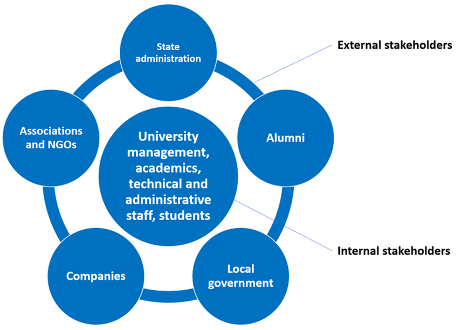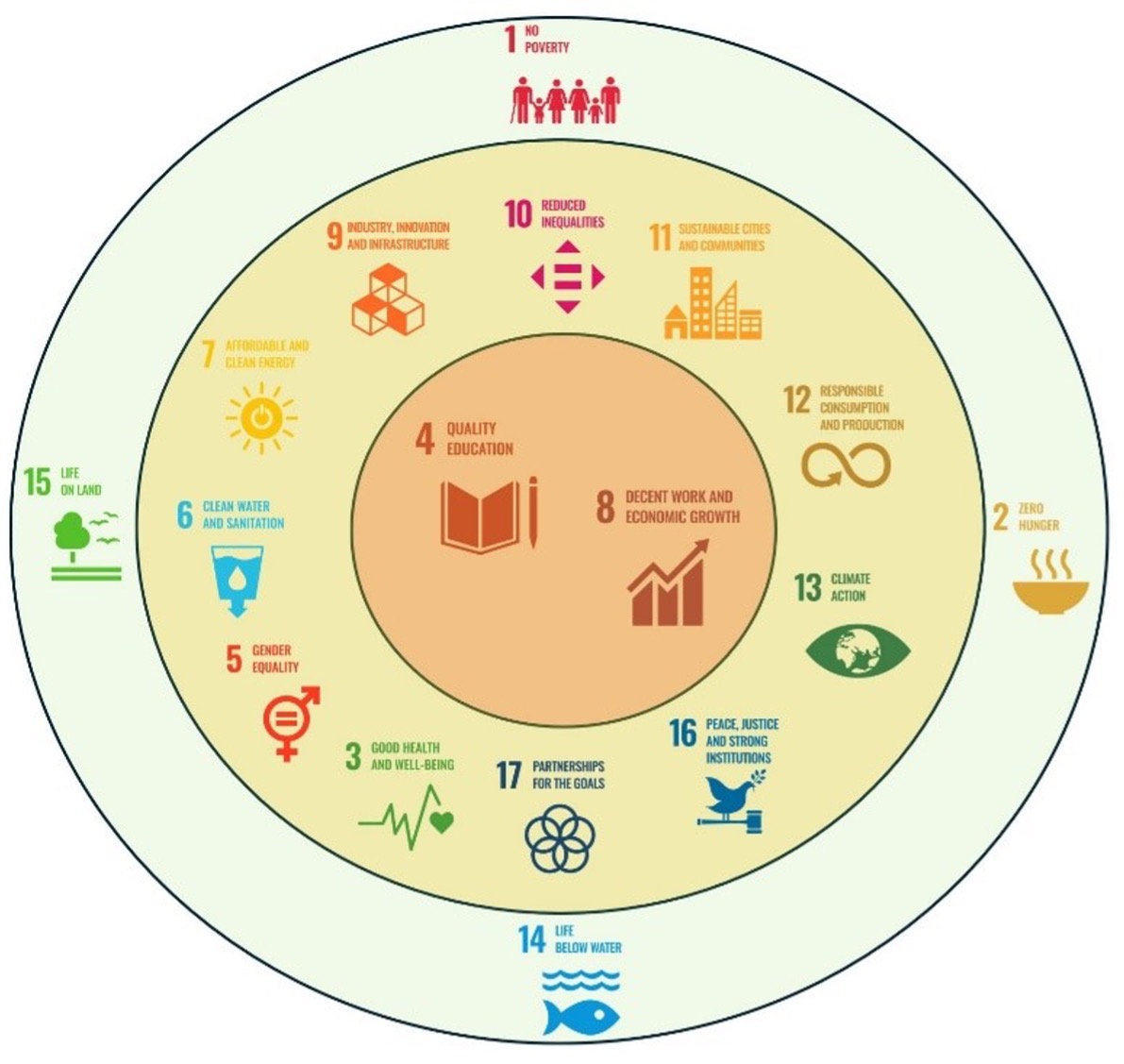Methodology and analysis
The VŠE Sustainability Strategy was developed as a participatory process. It involved a wide range of internal and external stakeholders: students, lecturers, University management, technical and economic staff, and University partners from the commercial and public sectors.
Methodologically, the development of the Strategy was based on the methodology for preparing public strategies of the Ministry for Regional Development. It was also based primarily on the UN Sustainable Development Goals, the Strategic Sustainability Management Benchmark for AACSB-accredited European universities, and the AACSB accreditation standard. Its development was also inspired by AASHE’s STARS (The Sustainability Tracking, Assessment & Rating System, Association for the Advancement of Sustainability in Higher Education) and Impact Rankings.
 To develop this Strategy, input from multiple sources was used, in particular the following:
To develop this Strategy, input from multiple sources was used, in particular the following:
- Unilead (2022) and Unilead 2 (2023) projects:
- mapping the current level of sustainability at the VŠE, especially in VŠE’s operational areas, through data collection and analyses;
- identification of relevant one-off and regular activities promoting sustainable development and knowledge on this issue;
- creating and connecting a network of actors working on sustainable development;
- development of detailed generic recommendations for each area.
- A questionnaire survey on food, waste and sustainable mobility (November 2023 – February 2024). The questionnaire survey results showed the interest of VŠE students and staff in information on sustainable development, in particular water management, waste management, sustainable food, circular economy and energy. The need for better communication about sustainable development initiatives and student involvement was mentioned.
- Focus groups with key stakeholders. A total of 8 meetings were held, including two meetings with students, three meetings with staff (academic and non-academic), two meetings with VŠE partners and one with VŠE management. The results of the broad stakeholder dialogue are presented later in this document.
- Discussions with catering providers at VŠE.
- Continuous monitoring of VŠE operations.
- Sustainability strategies and sustainability reports of European AACSB-accredited universities.
- International accreditation and rating systems for evaluating universities.
 The outputs of the aforementioned activities were quantitatively and qualitatively analysed, evaluated and communicated with relevant stakeholders. The key findings have been used to formulate this Sustainability Strategy in the relevant areas.
The outputs of the aforementioned activities were quantitatively and qualitatively analysed, evaluated and communicated with relevant stakeholders. The key findings have been used to formulate this Sustainability Strategy in the relevant areas.
As most universities structure their activities in sustainable development according to the SDGs, this issue was also given special attention in the stakeholder dialogue and focus groups.
At the beginning, focus groups participants were asked to rank the SDGs regarding their relevance for VŠE. They were asked to list at least five goals, with the most relevant goal numbered 1, followed by less relevant goals. These individual rankings were used as a basis for discussion during the focus groups meetings. The results showed a variety of answers before the debate and an uneasy path to consensus during the conversation.
For each objective, a total score was calculated as the ratio of the number of responses in a given focus group in which the objective occurred to the average ranking of that objective in that group. The Appendix includes the summary results for all groups along with the total score, number of occurrences, average ranking, and number of occurrences among the top five objectives for each goal.
It can be summarised that all the relevant aspects bring a pattern, with the two most important goals being SDG 4 — Quality education, and SDG 8 – Decent work and economic growth. These are followed by a group of goals of medium importance and goals with the lowest frequency of occurrence and low scores. This hierarchy of goals is visually presented in Figure 4.
Also interesting were the results of the stakeholder dialogue that followed after ranking objectives at the beginning of the focus groups. The discussion showed that, initially, some participants had no clear idea of the content and cross-links between the SDGs. However, during the dialogue, many realised their importance and connections.
Some of the objectives proved controversial in the debate. This includes, in particular, Goal 5 -Gender equality, where some stakeholders ranked it very high in their answers at the beginning. During the discussion, however, there were minority but vocal objections to the goal, which led to its proponents gradually abandoning it. The theoretical justification for this phenomenon in terms of psycho-social theories may be that group dynamics and a tendency towards conformity were at work. Some stakeholders also reported that they considered Goal 5 part of Goal 16 – Peace, justice and strong institutions. Goal 5 is not explicitly addressed in this Strategy as it is expected to be discussed in a separate strategy document (Equal Opportunities Plan).
It also turned out that the stakeholders considered it essential that VŠE not only teach about sustainable development but also set an example because only in this way can a generation of future managers be educated to apply the principles of sustainable development in their organisations. This fact significantly impacts the decision to implement some of the measures because, on the one hand, it is true that assessing the costs and benefits of the measures is always necessary, but on the other hand, it should not be forgotten that the benefits (unfortunately not easily quantifiable) often include the educational impact of the measure on stakeholders, especially students.